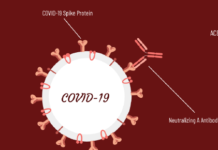It’s quite strange how one day can change your entire life. When I was 14, a freshman in high school, I found out I had scoliosis. Suddenly, I wasn’t allowed to carry text books to and from school, I couldn’t participate in gym, and I couldn’t sit on my bed and surf the web on my laptop. For six months after my family and I got the news, I was treated like fragile glass. I’m a junior now and things have changed. I pay more attention to aches and pains, and I try to keep my weight down because I know that ignoring any sign my body may be trying to give could be crippling.
“Scoliosis is an abnormal curvature of the spine. In scoliosis, the spine curves to the side when viewed from the front, and each vertebra also twists on the next one in a corkscrew fashion,” according to eMedicineHealth.com. Twice as many girls than boys have scoliosis. The reason for this has yet to be discovered. If a group of 1,000 people gathered together, 3 to 5 would have scoliosis.
When I was in physical therapy at Barnes Jewish Children’s Hospital I was told by Dr. Scott Luhmann, Associate Professor at Washington University’s School of Medicine, that no one has a perfectly straight spine. Scoliosis victims can have two different types of abnormal curves in the spine. The first, a single curve that results in the spine having a “C” shape. The second, a double curve which results in the spine having an “S” shape.
I have an “S” shaped curve. The last time I had an x-ray done my top curve was 42° and my bottom curve was 31°. A normal, natural curve could be so slight that it could be anything from 1° to 3°.
What could cause such a thing to happen? According to Washington University School of Medicine, congenital deformities, genetic syndromes, neuromuscular problems, limb length inequality, cerebral palsy, spina bifida, muscular dystrophy, spinal muscular atrophy, and tumors can cause scoliosis. However, about 80% of Scoliosis cases are idiopathic, according to WebMD, which means that the cause is unknown. Idiopathic scoliosis, says WebMD, is most commonly found in adolescent girls.
WebMD also states there are two forms of scoliosis: structural and nonstructural scoliosis. Structural scoliosis involves a curve in the spine, with rotation, that is irreversible and is usually caused by an unknown factor, a disease or a condition. Nonstructural scoliosis involves a curve in the spine, without rotation, that is reversible because it is caused by a condition such as back pain or a muscle spasm; an inflammatory condition, such as appendicitis; or a difference in leg length. My scoliosis is structural.
“[Doctors usually] test you for [scoliosis when you’re] in middle school,” says Dawanda Buchanan, a RN at St. Louis University Hospital. How do people find out they have Scoliosis? “A patient is asked to bend over or lean during the test.” Scoliosisnutty.com further explains, "The examiner may observe an imbalanced rib cage, with one side higher than the other, or other deformities.” The bend test can miss scoliosis cases because some curves are too small to see. So, some doctors just do X-rays. I did the bend test first then a short while later I got X-rays and was officially diagnosed with scoliosis.
According to eMedicineHealth.com,symptoms of scoliosis are not only those associated with the spine being curved. Your head may be off center, one hip or shoulder may be higher than the other, you may walk with a rolling gait, or one side of the body may not appear level. When I was younger I used to walk “funny”. As I got older, I just assumed it was because I walk fast. When I went to physical therapy for the scoliosis I had to be taught how to walk again and how to sit.
There are many ways to treat scoliosis without going under the knife. Someone with scoliosis could wear a back brace, which is designed to limit the mobility of spine. This limitation of movement helps people with lower back pain, because it reinforces good posture. Some people deal with their scoliosis by going to physical therapy. If the curvature is slight, you can have a running tab with a chiropractor or the local yoga class.
Luhmann gave me other choices. If I were to have an operation to fix my spine, I could have chosen from growing rods, vertebral stapling, the VEPTR procedure, or the Shilla Procedure.
VEPTR stands for Vertical Expandable Prosthetic Titanium Rib. According to University of Wisconsin School of Medicine, surgeons implant an expandable metal rod that is curved to fit the back of the chest and spine, using hooks located at both ends of the device. According to ChildrensOrthopaedic.com, a growing rod is “metal rod attached to the spine is periodically lengthened by a simple procedure.”
The Shilla procedure does the same thing, but it doesn’t require multiple procedures. Spinal fusion is essentially a "welding” process. “The basic idea is to fuse together the painful vertebrae so that they heal into a single, solid bone,” according to St. Louis Children's Hospital. Vertebral stapling is an alternative to spinal fusion. “Surgeons insert special staples, made of titanium alloy, along the outer curve of the spine to help stabilize and prevent further progression of the curve," according to Children's Hospital Boston.
If unchecked, scoliosis will progress as the person grows. After someone’s body stops growing their curve will increase a degree a year at the most. Pregnancy and stress on the back could make a curve worse. As old age sets in and bones begin to weaken, the spine could be in serious danger of fracture.
Although there are many means to treat scoliosis, few focus on what happens to the people who get put in the gray category. My scoliosis was 15° away from being a “recommended” surgery.
Fortunately, I’m doing well now; I didn’t have any of the surgeries and the scoliosis stunted my growth so there was no need for a brace. I exercise daily and try to stay flexible.
I also deal with the insecurities my spinal deformity has given me. I sometimes catch myself wondering if my curve showing is through my shirts in the summer, and if people notice. I can bend farther on one side than the other. I find myself obsessing about whether people think it’s weird that after a certain point my spine isn’t where it should be, and the fact that I shy away from most sports.
We all deal differently. Tyler B. Humphries

This work is licensed under a Creative Commons Attribution-NonCommercial-NoDerivs 3.0 Unported License














awsome dude…i’ve learned something
Great article…very informative!! Stay encouraged.
I have to say this was a well written article. I very impressed and well educated about your condition. Thank you for sharing and I love you sissy!
This article is truly informative and shows the dedication and research you put into your work. Good Job and good writing!
this article was very interesting , it held my attention through the entire thing . You are a great writer and this article shows me that you really connected with your situation. Great job keep up the good work !!!:smile
This was absolutely an amazing article you really put time and effort into it.
I really liked this article, it was veary informitive.It made me want to learn more about scoliosis
This is a great article. It pulled me in right away. You were very informative and did it in a wasy that didn’t make the article seem boring. Great job !
I really learned alot from this article about scoliosis .I would have never knew that with every 1000 people, each group 3 out of 5 people would have scoliosis. Veri Informational.
I learned alot from this article.I learned that scoliosis can curve your spine and can limit you to what you can and cant do.
This is a really good article… I can honestly say I learned something that kept me interested…especially the part about girls having a higher chance at getting it than boys…ouch! That caught my attention! Great job!!!
This article is very informational,I learned things about Scoliosis didnt know about. I also didnt know that there is that many people who has Scoliosis and or that its ‘most commonly found in adolescent girls’. Awesome work!
I Leard Alot From This Article Dealing With Scoliosis Keep Up The Hard Work:smile
This is very well written and thoughtout. To be honest I’ve never heard of such disease, and after reading this article I now know of, and understand what scilosis is. :smile
wow, never know about this before, when i sit, i always have my back bend toward… gotta change my posture now .
Thanks alot
I did not know scoliosis was more commen in adolecent girls
YYYYEEEEAAAAHHHH SSSOOLLDDDAAANN!!!!!!!
This article really informs everyone about scoliosis. It’s relatable even to those who don’t have it.
Beautiful job Tyler. I had no idea about half this stuff. It was very touching to link this with your personal story with Scoliosis.:cried:smile
This article was very informational and I hope a doctor comes up with something to improve your back curvature.
this helped alot because i have really bad Scoliosis myself and have had lots of problesm with regular day things. i had to go to the doctors alot and it not only effected my back it effected my neck and shoulders to hurt worse now i know that i should keep an eye on my weight and aches and pains so i can keep it from getting worse
very informative